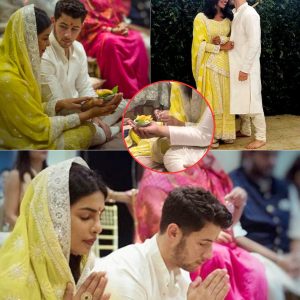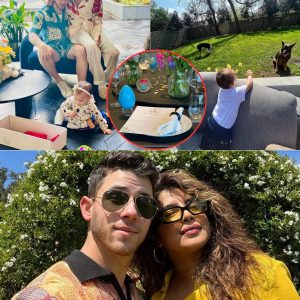Oprah’s Hawaiian adventure began a couple of years ago when her personal trainer turned property manager, Bob Greene, planted the idea that she might buy land on one of the islands. Besotted with the weather, the mountains, and the ocean, Bob had been visiting a certain part of Hawaii for 15 years, looking for “the perfect spot.”
He found it in a remote up-country region, where the houses that dot the moss-covered rock hillside face the ocean. Bob then convinced Oprah to look at a nearby property for sale. “He was worried that some developer might swoop up the land and build condos,” Oprah says.

Instead, she bought the land—and has no plan to build any condos.
Oprah called Ellie, her Hawaiian decorator, after seeing a photograph of Ellie’s Connecticut home on the cover of a magazine; she was attracted to its informal American country style. When the phone rang and Ellie heard Oprah on the other end of the line, Ellie says, “I jumped out of the bathtub, grabbed my cell phone, and ran out on the driveway for better reception—wrapped in only a towel. Oprah said, ‘I want you to do my house in Hawaii.’ I thought we should meet first.”
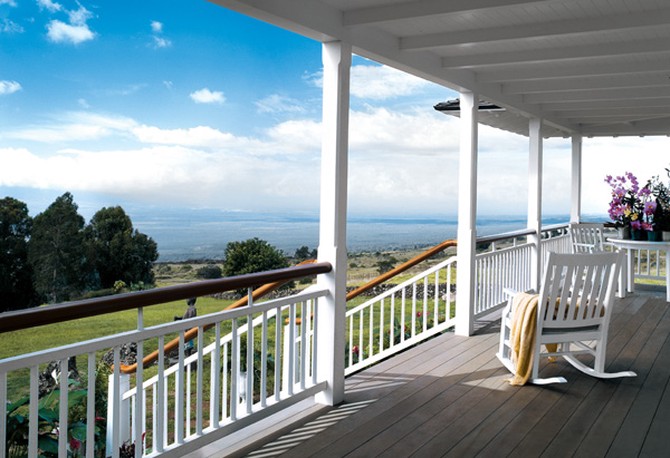
Ellie and Oprah flew to Hawaii a few months later. “I saw a small porch, a kitchen that needed work, a master bedroom that did not face the view and had a low ceiling, and no connection between inside and outside,” Ellie says. “The original plan was to do a quick job on the house then think about building the ultimate Hawaii homestead.”
What started as a small renovation soon turned into a major project. Architectural designer Jeff Wooley, of John B. Murray Architect, rejiggered the quirky floor plan to create less-angular rooms and then, with the help of T.M.C. General Contracting Inc. and a team of craftsmen, stripped the house to its basic structure, moved the staircase, raised the ceiling of the master bedroom, installed French doors throughout, and wrapped the whole with a wonderfully wide veranda—a great place to sit and soak up the sweeping view.
The generous wraparound porch looks as if it’s been part of the house forever. The outdoor furniture from Weatherend matches the railing’s simple lines.
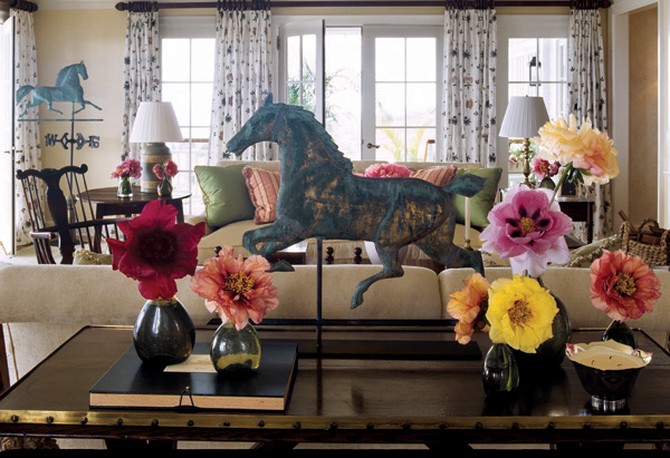
Figuring out how to furnish the rooms was not easy. At first, Ellie and her team researched Hawaiian fabrics and antiques, thinking that the rooms should reflect the locale. But that wasn’t what Oprah had in mind. “They came with pineapple doodads and big flower things. They had everything but a hula skirt,” she recalls. “I said, ‘Whoa! If I want to see Hawaii, I’ll just walk out my door.'”
The interior decorator went back to her drawing board, and by the next time they all met, Oprah knew Ellie was on the right track—especially when Ellie, a former folk-art curator, suggested they go shopping for the kind of extraordinary antiques that are part of the American heritage.
The horses on the hills surrounding the ranch provided Oprah and Ellie with a strong theme for the living room. On one of their shopping trips, a late-19th-century American weather vane in the shape of a galloping horse caught Oprah’s eye, and Ellie made it the centerpiece of the room. The designer also transformed a reproduction tea canister into a lamp and placed it on a side table near one of the sofas, which were upholstered in a Boussac chenille. The curtains, elaborately embroidered in India, were also made just for this room.
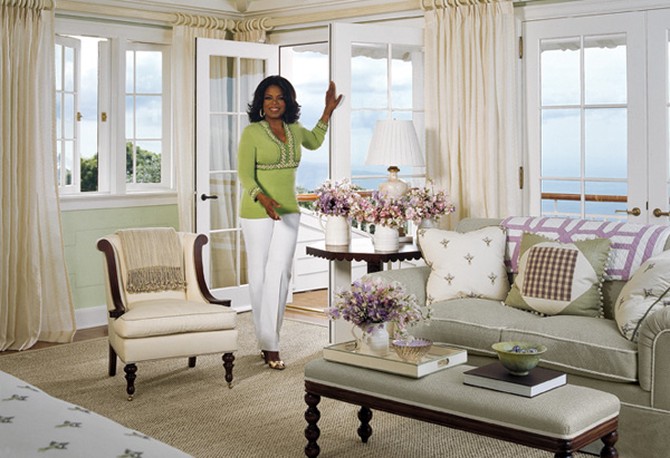
From her bedroom, Oprah can step directly onto the terrace. The high ceiling creates an open and airy space, and a flower motif, designed by Ellie, was stenciled between the beams to continue the folk-art feel. A custom chair, sofa, and ottoman—which doubles as a table—allow the room to be used as a comfortable sitting room.
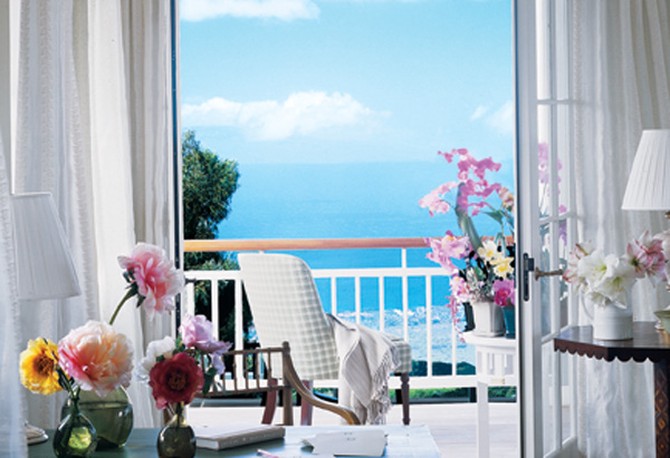
Oprah can pull up a chair and watch the clouds roll by from the veranda of the master bedroom. The sheer panels, made from a Pollack Belgian linen, catch the ocean breeze.”She liked [the home’s] small scale,” Ellie says. “She already has a large home in Santa Barbara—this seems to go back to something real and personal. It’s a great house for her and two or three friends.”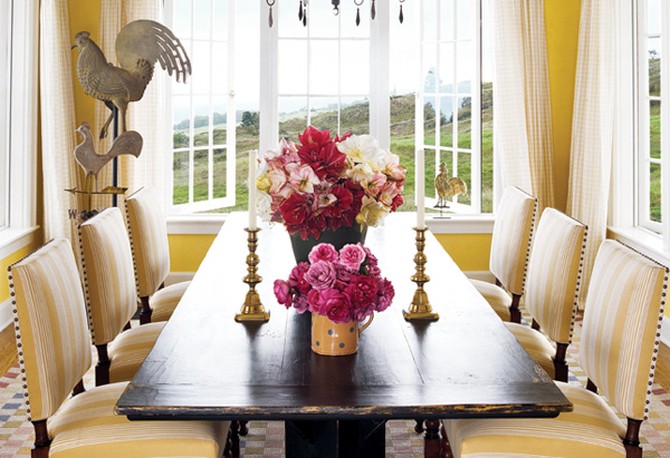
Photo by Michel Arnaud, styling by Carlos Mota
Things that have been in Oprah’s life for years have also been put to fresh use, creating a collage of her personal history. A Shaker chest that sat in her Indiana kitchen for 10 years now stands in the front hall; a table from a former pool house fits right into the new dining room. Ellie added the chairs, covering them in a striped cotton that contrasts playfully with the checkerboard design of the wool rug from Beauvais Carpets.”I grew up in a rural folk environment, and I’m still rooted in things that have brought me comfort over the years,” Oprah says.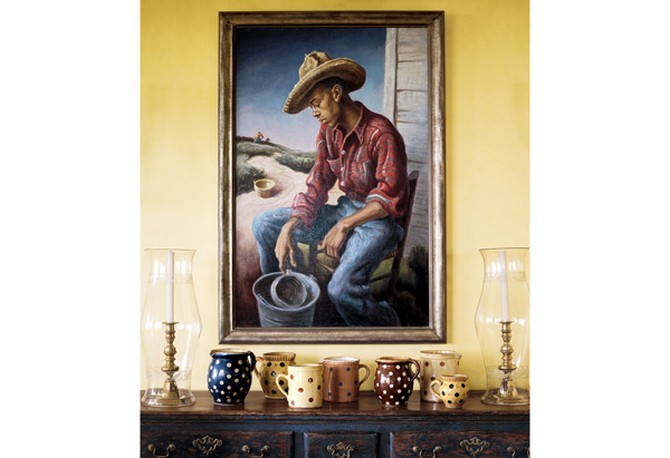
Photo by Michel Arnaud, styling by Carlos Mota
A strong connection to her past drew Oprah to The Waterboy, a 1946 masterpiece by the famous American painter Thomas Hart Benton. It’s one of her most recent purchases and one of the most dramatic. “He’s like someone I knew growing up,” she says of the painting’s plaid-shirted, straw-hatted young man. “I bought him because I loved him.” Now in the dining room, his presence powerful and alive, The Waterboy is like a welcome old friend.On the 18th-century English dresser, which still retains its original blue paint, a cluster of multicolored French Jaspé pottery pitchers stands between two brass candlesticks housed in 19th-century glass hurricanes.
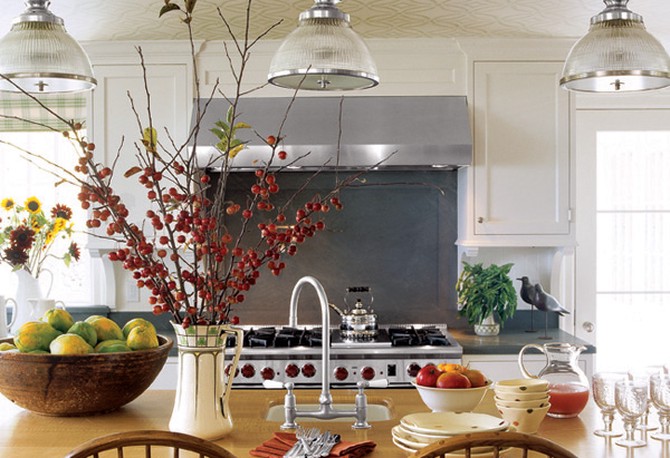
In the kitchen, Ellie had the ceiling stenciled with a pattern inspired by an old quilt. Windsor-style bar stools pull up to the island, above which hangs a triple light fixture from Ann-Morris Antiques. The gas range is from Wolf. The polka-dot dinner plates and bowls are from Vietri. Floral design throughout is by Sheryl Suzuki and Eileen Woods.Even across the Pacific and far from her roots, Oprah has created a place to call home. “I love, love, love my house,” she says. “It’s a gem, so sweet and exquisite. Such a real, normal house. It feels like a nice blanket.” Then she adds, “A lovely and soft cashmere one.”

